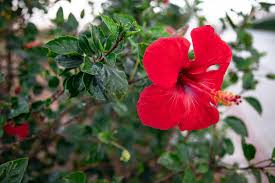
Disease Management in Hibiscus
Share
Introduction
Hibiscus plants, known for their vibrant and exotic blooms, are a favorite among gardeners. However, like any other plant, hibiscus is susceptible to various diseases that can hinder its growth and beauty. Effective disease management is crucial to maintain the health and aesthetic appeal of these plants. In this blog post, we will explore common diseases affecting hibiscus and provide practical tips on how to manage and prevent them
Common Diseases in Hibiscus
Hibiscus Blight
Symptoms: Wilting leaves, yellowing foliage, and sudden plant death.
Cause: Fungal pathogens such as Botryosphaeria.
Management: Remove and destroy affected plant parts, improve air circulation around the plant, and apply fungicides if necessary.

Leaf Spot
Symptoms: Small, dark spots on the leaves that can grow and merge, leading to significant leaf damage.
Cause: Fungal infections by pathogens like Cercospora.
Management: Regularly prune and dispose of infected leaves, ensure proper spacing between plants for air circulation, and use appropriate fungicides.
Root Rot
Symptoms: Stunted growth, yellowing leaves, and root decay.

Cause: Overwatering and poor soil drainage leading to fungal growth (e.g., Phytophthora).
Management: Improve soil drainage, avoid overwatering, and treat with fungicides designed for soil pathogens.

Powdery Mildew
Symptoms: White, powdery spots on leaves and stems.
Cause: Fungal spores, often from Erysiphales.
Management: Remove affected plant parts, increase sunlight exposure, reduce humidity, and apply sulfur-based fungicides.

Rust
Symptoms: Orange or yellowish pustules on the underside of leaves.
Cause: Fungal infection by Puccinia species.
Management: Prune and destroy infected leaves, ensure good air circulation, and apply fungicides specifically for rust.

Prevention Tips
Proper Watering: Avoid overwatering and water the base of the plant rather than the foliage to prevent fungal growth.
Soil Management: Ensure well-draining soil to prevent root rot. Adding organic matter can improve soil structure.

Plant Spacing: Maintain adequate spacing between plants to enhance air circulation and reduce humidity.
Regular Inspection: Regularly check plants for early signs of disease to address issues promptly.
Sanitation: Clean garden tools regularly to prevent the spread of pathogens.
Conclusion
Maintaining healthy hibiscus plants requires vigilance and proactive disease management. By recognizing the symptoms of common diseases and implementing effective prevention and treatment strategies, you can ensure your hibiscus remains a vibrant and thriving part of your garden. Happy gardening!
